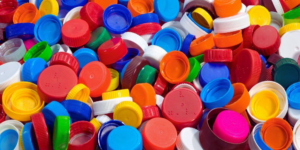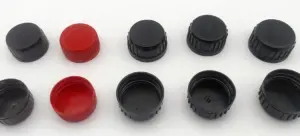How to Choose the Right Plastic Caps for Your Packaging Needs
Are you looking for a suitable plastic caps to complete your product packaging? A suitable caps is a guarantee of product quality and also adds design beauty to the appearance of your product to impress users and make your product stand out in the market. I use my Past work experience tells you how to find the plastic cap that suits you. Whether you are in the food industry or the chemical industry, you must choose the plastic caps that suits your products to meet the needs of consumers. I will use a simple process to help you find the right cap for your product packaging
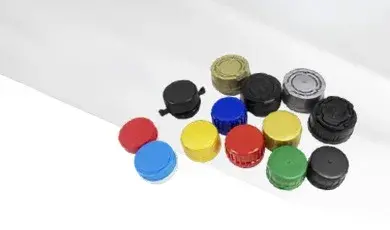

Importance of choosing the right plastic caps for packaging
One paramount consideration is the functionality of the plastic cap, as it directly influences the security and durability of the packaging. Whether it’s a beverage, personal care product, or chemical industry item, the cap serves as the primary barrier against external elements, ensuring the contents remain intact during transportation and storage. A secure seal not only prevents leaks and spills but also safeguards the product from contamination, maintaining its quality and freshness.
Material
The type of material used for the plastic cap is another critical factor. Different products demand different levels of protection. For instance, perishable goods may require airtight seals to preserve freshness, while chemical products might necessitate caps resistant to corrosion. Manufacturers must carefully consider the compatibility of the cap material with the packaged contents to guarantee optimal performance and safety.
Sustainability
In an era where environmental consciousness is paramount, the sustainability of packaging materials is a growing concern. The choice of plastic caps can significantly contribute to a brand’s environmental footprint. Opting for recyclable or biodegradable materials not only aligns with eco-friendly values but also resonates positively with environmentally conscious consumers. As sustainability becomes a key driver of consumer choice, selecting eco-friendly plastic caps is a strategic move that reflects a commitment to responsible packaging practices.
Exterior
Moreover, the aesthetics of the plastic cap play a pivotal role in shaping the overall appeal of the product. Design elements such as color, shape, and ease of use contribute to the consumer’s perception and can influence purchasing decisions. A well-designed cap enhances the product’s marketability and reinforces brand identity.
Understanding different types of plastic caps
Plastic caps are versatile closures used in a myriad of industries for sealing containers and packaging various products. Understanding the different types of plastic caps is essential for manufacturers seeking to optimize their packaging solutions and meet specific requirements.
The Screw-On Maestro: A Threaded Affair
In the grand symphony of plastic caps, the screw-on variety takes center stage. With its threaded prowess, it ensures a secure embrace, turning containers into steadfast companions against spills and leaks.
Snap-On Serendipity: The Casual Charmer
Meet the snap-on cap – the laid-back surfer dude of the cap family. No threads, no drama. It’s all about that effortless “snap” into place, perfect for those moments when you need to access your condiments at warp speed.
Child-Resistant Enigma: A Twist of Safety
Enter the child-resistant cap, a magical guardian against tiny hands and curious minds. With its push-down-and-twist routine, it’s the cap version of a secret handshake, keeping potentially harmful substances under lock and key.
Dispenser Dexterity: The Maestros of Pouring Precision
Dispenser caps take the stage, conducting a symphony of controlled pouring. Whether it’s lotions, sauces, or liquid detergents, these caps – with flip-tops, pump dispensers, and spouts – ensure a mess-free performance, turning every pour into a work of art.
Tamper-Evident Sleuth: The Sherlock Holmes Cap
In the cap mystery realm, the tamper-evident cap plays detective. Armed with a perforated seal, it reveals if someone’s been meddling. These caps are the guardians of authenticity, ensuring your products remain safe and untampered.
Factors to consider when choosing plastic caps
Choosing the right plastic lid is a critical decision in this part of the packaging world, as it directly affects the functionality, safety and overall success of the product. Several factors come into play when making this decision, and careful consideration of these factors is critical for manufacturers and product designers. I will list them next
Functionality and Design
The intended function of the packaging and the design requirements are crucial considerations. Screw-on caps, snap-on caps, dispensing caps, and child-resistant caps each serve distinct purposes. Understanding the desired functionality helps in choosing the right cap type. Additionally, the design of the cap plays a role in consumer appeal, influencing factors such as ease of use, aesthetics, and brand identity.
Environmental Impact
In an era of heightened environmental awareness, considering the environmental impact of plastic caps is paramount. Opting for caps made from recyclable or sustainable materials demonstrates a commitment to environmental responsibility. Manufacturers are increasingly embracing eco-friendly alternatives to align their packaging strategies with the growing consumer demand for sustainable practices.
Regulatory Compliance
In the manufacturing and packaging industry, compliance with regulatory standards is non-negotiable. Plastic cap manufacturers must ensure their products meet specific safety and quality standards, especially if they are intended for consumer or personal use. Ensuring compliance with relevant regulations ensures that packaging not only functions effectively, but also complies with legal and ethical standards.
Cost and Efficiency
Practical considerations, such as production costs and efficiency, are vital factors influencing the decision-making process. Manufacturers need to balance the quality and features of the plastic caps with the overall cost of production. Opting for caps that streamline the packaging process and minimize waste can contribute to efficiency gains and cost-effectiveness.
Consumer Experience:
The end-user experience is a critical aspect of product success. Considering how consumers interact with the packaging, open the cap, and access the product can influence their overall satisfaction. Convenience, ease of use, and the perceived quality of the packaging contribute to a positive consumer experience.
Plastic caps compatibility with packaging materials
Ensuring compatibility between plastic caps and packaging materials is a fundamental consideration in the realm of product packaging. The synergy between these components is crucial for maintaining the integrity, safety, and overall quality of the packaged goods.
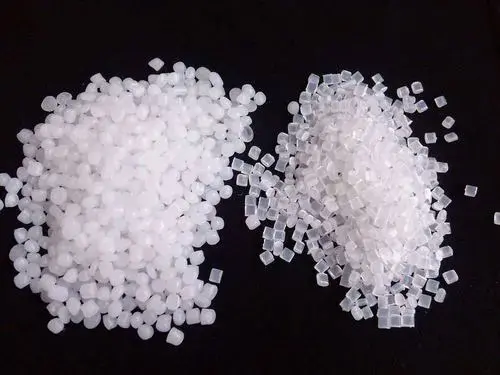
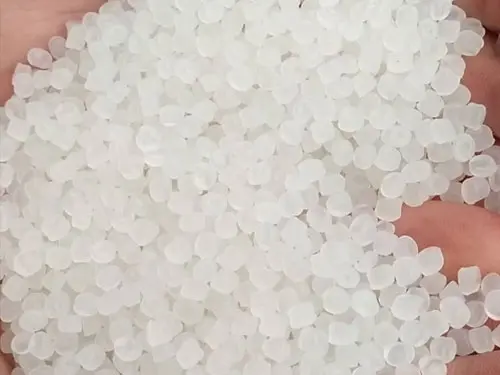
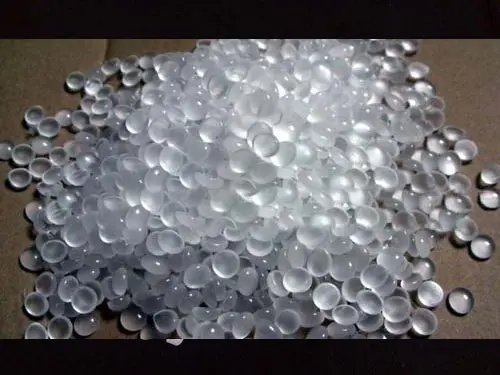
Plastic Caps Material Selection
The first step in addressing compatibility is selecting a plastic cap material that aligns seamlessly with the packaging material. Various plastic cap materials, such as polyethylene, polypropylene, or PET, exhibit different characteristics that make them suitable for specific packaging applications. Understanding the properties of both the cap and packaging material is essential for achieving optimal performance.
Plastic Caps Chemical Interactions
Compatibility extends beyond the physical fit; it involves an understanding of potential chemical interactions between the plastic cap and the packaged product. Certain products, such as pharmaceuticals or chemicals, may necessitate caps that resist reactions with the contents, preventing contamination or degradation. In food packaging, ensuring that the cap material is inert and does not leach harmful substances into the food is critical for consumer safety.
Plastic Caps Sealing and Barrier Properties
The effectiveness of a plastic cap relies on its ability to create a secure seal with the packaging material. Different packaging materials may have varying textures, surface characteristics, or permeability levels, influencing the sealing performance of the cap. Additionally, for products sensitive to external factors like moisture or air, selecting caps with appropriate barrier properties is essential to maintain product freshness and quality.
Plastic Caps Temperature Considerations
Temperature fluctuations can impact the compatibility between plastic caps and packaging materials. Caps should be selected based on their ability to withstand temperature variations during transportation, storage, and usage. Compatibility with the thermal expansion and contraction of both the cap and packaging material ensures that the seal remains intact under diverse environmental conditions.
Packaging Form and Function
The form and function of the packaging, whether it’s rigid, flexible, or a combination of both, can influence the choice of plastic caps. The cap must complement the overall design of the packaging to ensure a cohesive and aesthetically pleasing presentation. Additionally, considerations such as the method of application, closure type, and ease of use contribute to the functional compatibility of caps with diverse packaging formats.
Plastic Caps size and fit considerations
When it comes to plastic caps in the world of packaging, size and fit considerations play a pivotal role in ensuring a seamless and effective closure. The harmony between the cap dimensions and the container’s specifications is not just a matter of practicality but influences the overall functionality, aesthetics, and consumer experience.
Container Compatibility
Choosing the right cap size begins with understanding the dimensions and specifications of the container it will seal. Whether it’s a bottle, jar, or tube, the cap should snugly fit the container’s neck or opening. A proper fit not only ensures a secure closure but also contributes to the overall structural stability of the packaging.
Thread Compatibility
For screw-on caps, the compatibility of threads is paramount. The cap’s threading must precisely match that of the container to create a tight and secure seal. Mismatched threads can result in leaks, compromising the product’s integrity and potentially leading to spillage during handling or transportation.
Functionality and User Experience
The size and fit of a plastic cap directly impact the ease of use for consumers. Caps that are too small or too large may present difficulties during opening and closing, affecting the overall user experience. A well-fitted cap enhances convenience and contributes to positive consumer perceptions of the product.
Product Integrity
The size and fit of the cap also influence the preservation of the product within. A properly sized cap ensures an airtight or secure seal, preventing exposure to external elements such as air, moisture, or contaminants. This is particularly crucial for products sensitive to environmental factors, ensuring they remain fresh and maintain their intended quality.
Aesthetic Appeal
In addition to functional considerations, the size and fit of the cap contribute to the overall aesthetic appeal of the packaging. A cap that complements the container’s shape and design enhances the visual cohesiveness of the product. Consistency in size and fit across product lines can also contribute to a recognizable and cohesive brand image.
Regulatory Compliance
Size considerations are not only about the physical fit but also compliance with regulatory standards. Some industries may have specific requirements for packaging dimensions to ensure safety, quality, and accurate product labeling. Adhering to these standards is crucial to avoid legal issues and maintain consumer trust.
plastic caps sustainability and eco-friendly options
In the ever-evolving landscape of packaging, sustainability has emerged as a guiding principle, steering industries toward eco-friendly alternatives. This shift is particularly evident in the realm of plastic caps, where manufacturers are actively exploring ways to reduce environmental impact. From recyclable materials to biodegradable options, the quest for sustainable plastic caps is a journey toward a greener, more responsible future. By opting for eco-friendly alternatives, businesses not only contribute to the global effort to minimize plastic waste but also align themselves with the growing consumer demand for environmentally conscious practices. The exploration of sustainable plastic caps is not merely a trend; it represents a transformative step toward a more harmonious coexistence between packaging innovation and environmental stewardship.
Conclusion: Making the right choice for your packaging needs
In the intricate tapestry of product packaging, the importance of making the right choices cannot be overstated. From selecting the appropriate plastic caps that seamlessly blend with container dimensions to embracing sustainable and eco-friendly options, every decision shapes the destiny of the packaged product. The journey encompasses considerations of functionality, safety, environmental impact, and consumer satisfaction. In the end, the right choice for packaging needs extends beyond mere practicality; it’s a strategic move that influences market success, consumer perception, and the ecological footprint of the brand. As industries evolve, the significance of informed decisions in packaging becomes increasingly apparent, paving the way for a future where innovation and responsibility coalesce for a harmonious and prosperous tomorrow.

